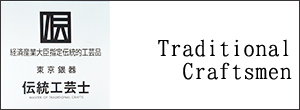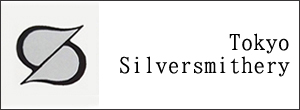- Home
- Tokyo Silversmithery
Tokyo Silversmithery
About Tokyo Silversmithery
Tokyo Silversmithery is a metal craft made mainly in Tokyo, and was designated as a national traditional craft in 1979. Traditionally, the raw material used is silver, and the silver in the bullion has a purity of 92.5% or more.
Taking a closer look at the history of Tokyo Silversmithery, its beginnings can be seen in the mid-Edo period. Silverware craftsmen called silver masters (shirogane-shi) and decorative craftsmen called metalworkers(Kinko-shi) who make combs, hairpins(kanzashi), and shrine metal fittings have appeared, and silverware are widely popular among townspeople. The techniques of Tokyo Silversmithery are handed down by craftsmen called blacksmiths(Tankin-shi), goldsmiths(Chokin-shi) and finishers(Shiage-shi). Most of the manufacturing process is performed manually by craftsmen, and various products are manufactured using the techniques of “forging”(tan-kin), “engraving(cho-kin)”, “fitting”(kiribame), and “brazing(ro-zuke)” manufacturing.
Silverware manufacturing process
Melt rolling of material
Blowing (Fu-ki)
 Melting the ingot in a furnace to make a large plate.
Melting the ingot in a furnace to make a large plate.
Roll (No-be)
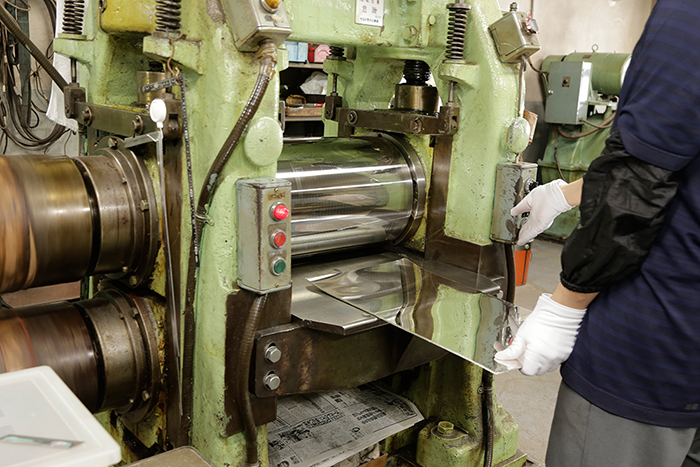 Roll the rolled metal plate thinly.The thickness can be adjusted in 1/100 ㎜ increments.
Roll the rolled metal plate thinly.The thickness can be adjusted in 1/100 ㎜ increments.
Ex: Silver plate for photo stand → 0.5㎜ thick
Silver plate for Orin ( buddhist bell ) → 3㎜ thick
Silver plate for guinomi ( sake cup ) → 1㎜ thick
Cutting (Jigane-dori)
 Cut the board with slicing scissors according to the size of the product to be created.
Cut the board with slicing scissors according to the size of the product to be created.
Manufacture of goods
Forging (tan-kin)
This is a technique to shape from one piece of metal plate using a metal pad and a hammer. With this technique, we can make a variety of 3-dimensional objects by shaping a single metal plate.
Aperture (shibori)
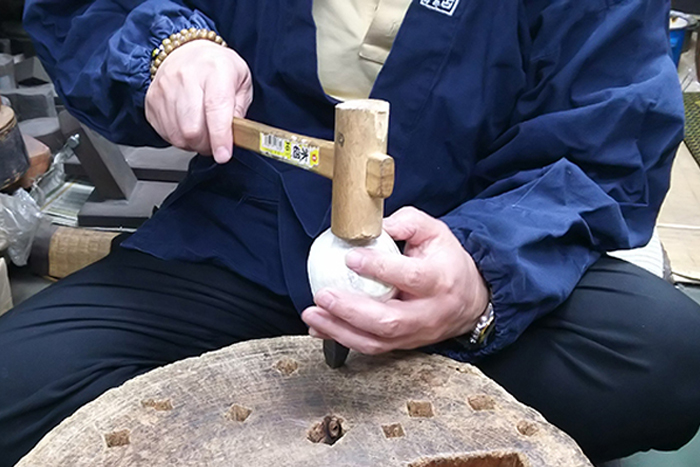
This is a technique in which one metal plate is hit with a mallet to bend into a dish shape, and then hit with a hammer to form a 3-dimensional shape. By utilizing the extensibility of metal, it has become possible to turn a 2-dimensional plate into a 3-dimensional material.
Engraving (cho-kin)
A decoration technique in which a chisel is used to decorate the surface of a vessel made of cast or forged metal. Depending on the shape of the chisel and the method of carving, there are carving, stamping and inlaying.
Casting metal (chu-kin)
Casting is a technique that creates a “mold” from gypsum, clay, and wood prototypes, pours molten metal into it, and shapes it.
Finishing
Polish finishing (migaki)
 A finishing method that gives gloss by polishing.
A finishing method that gives gloss by polishing.
Antique finishing (furu-bi)
 A method of finishing the surface of brand-new silverware to prevent it from discoloring.
A method of finishing the surface of brand-new silverware to prevent it from discoloring.
Coloring (Sai-kin)
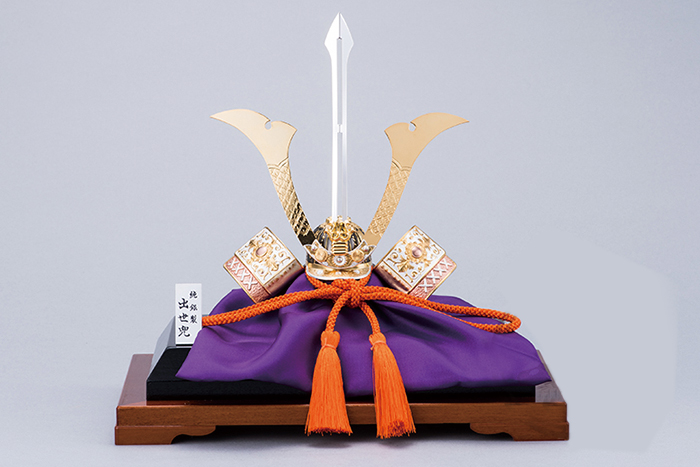 A finishing method that uses an alloy such as gold, silver, copper, or black nickel to add color.
A finishing method that uses an alloy such as gold, silver, copper, or black nickel to add color.
Decorating(ka-shoku)
Hitting with a hammer for patterning and driving the pattern on the surface of silverware.There are three typical patterns below.
Tatami mat pattern (Goza-me)
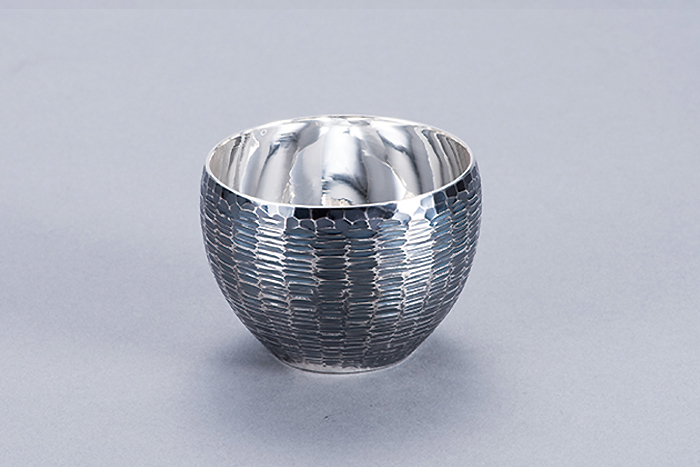 Pattern imitating tatami mat pattern
Pattern imitating tatami mat pattern
Hammered pattern (Tuchi-me)
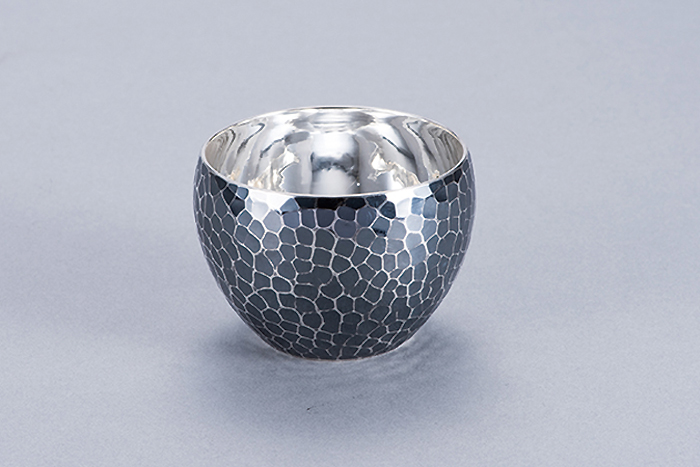 Pattern that leaves a trace of hit with a hammer
Pattern that leaves a trace of hit with a hammer
Rock pattern (Ganseki)


